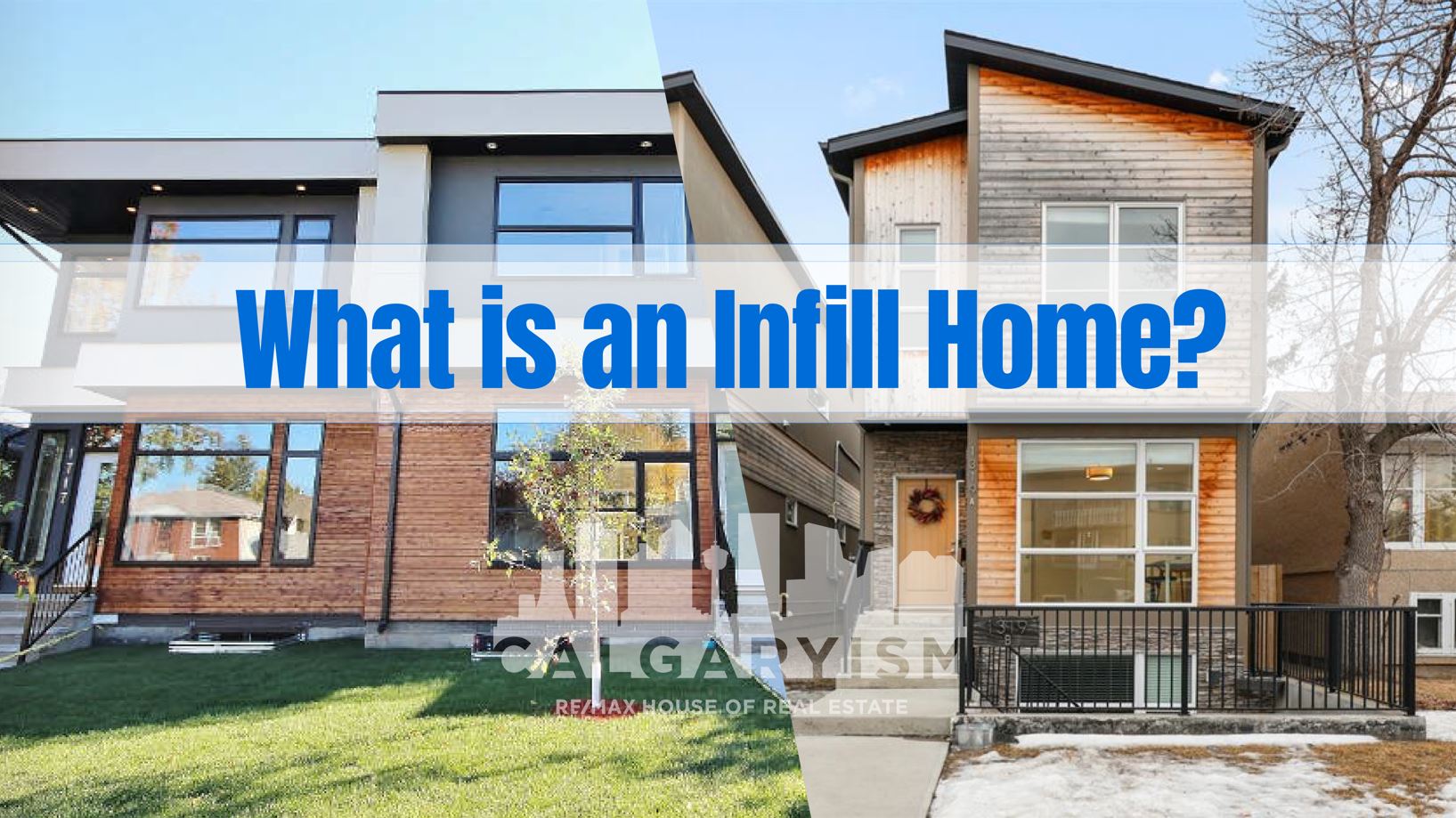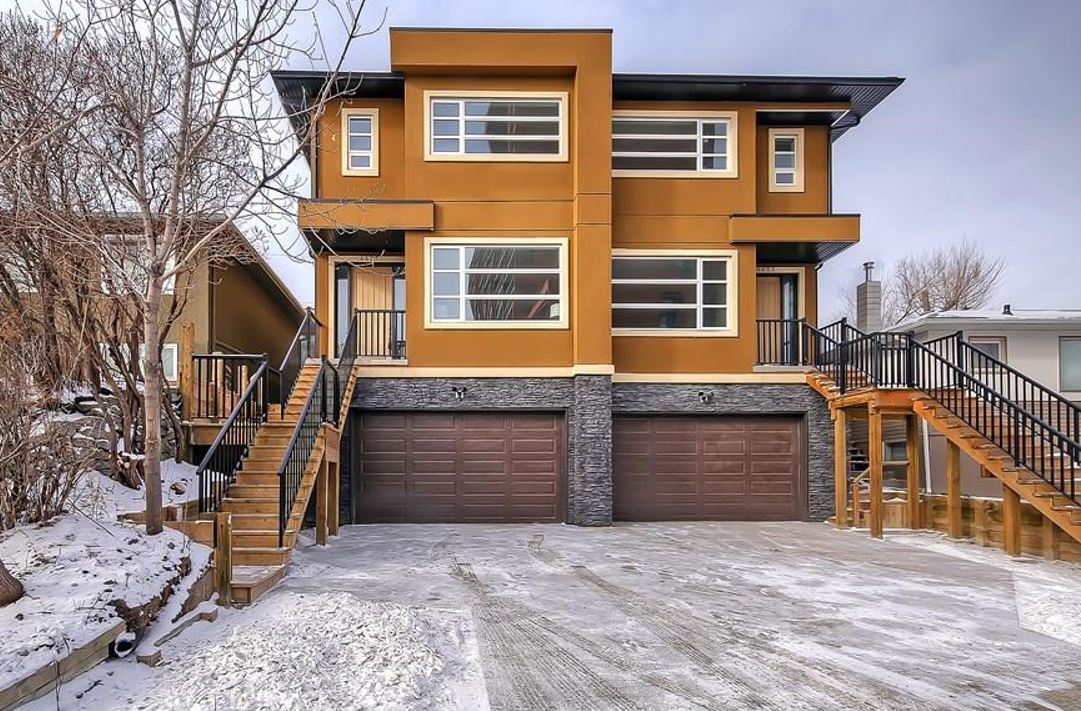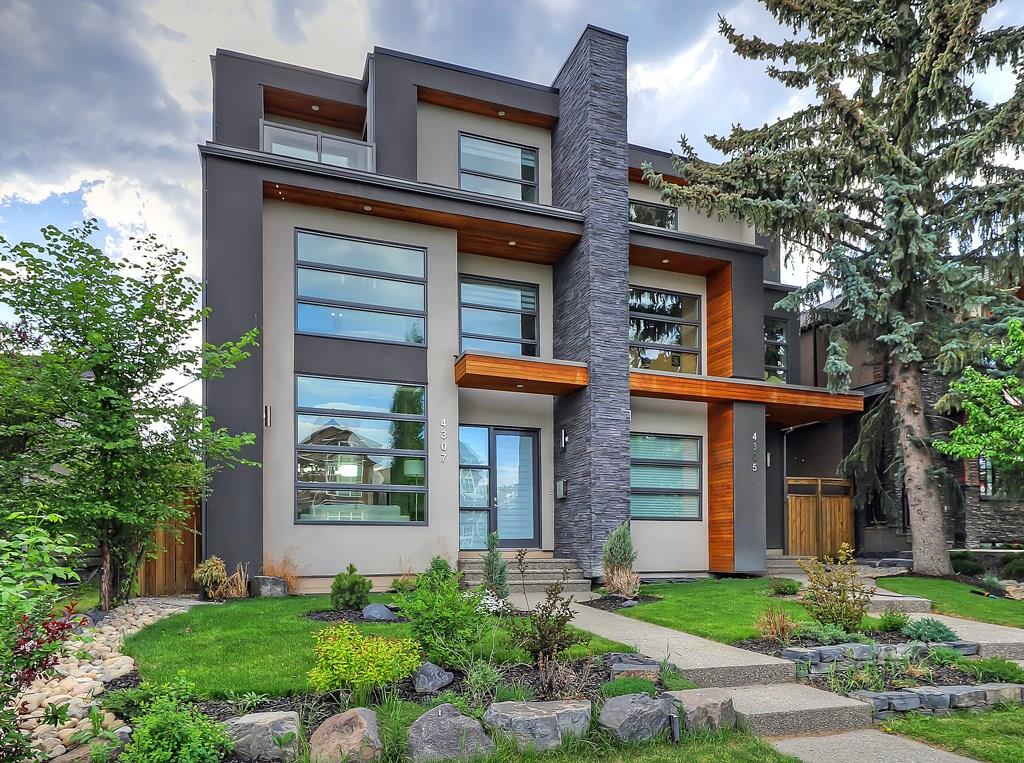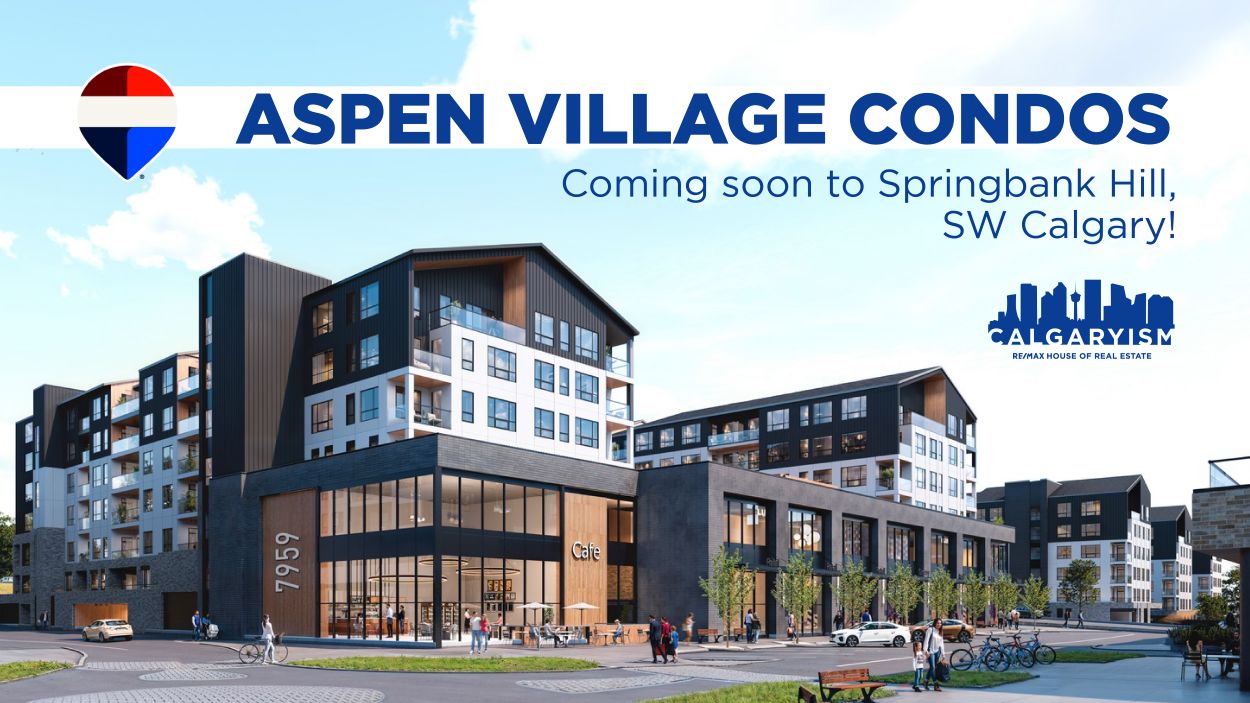Main Content
What are Infill Homes? Pros and Cons of Infill Housing

The term “infill” describes a form of residential construction in which a new home is built on an older lot, with the old structure being demolished to make way for redevelopment. Hence, the existing lot is “filled in” with a new construction build and is called an “infill.”
These new homes are typically built in well-established urban areas of large cities such as Calgary, Edmonton, Vancouver, and across North America. In Calgary, most of the neighbourhoods undergoing an “infill” renaissance are from the post-WWII era, as their original properties were built between the 1940s and the 1970s. Infill housing is also often built on vacant lots, although most land in inner-city areas is already developed or zoned for larger multi-family and commercial projects.
Defining Characteristics of Infill Housing

When most people think of an infill home, specific characteristics come to mind. Infills are:
- New or relatively new construction—new developments built since the turn of the century, but sometimes earlier
- Located within established, mature neighbourhoods, usually replacing older houses (tear-downs) rather than being built on previously undeveloped land
- Attached or detached single-family homes, although duplexes (semi-detached), townhouses, and occasionally small-scale multi-family units also fit the definition
- Built on standard urban lots—commonly 25’–50’ wide by 100’–140’ deep, matching or subdividing the original lot dimensions, although the lot size may vary significantly depending on the municipality
- Distinct in design—custom homes, often featuring modern design or contemporary architectural styles, higher-end finishes, and personalized customization compared to other property types
- Built closer to the street with minimal setbacks, maximizing lot usage and with rear-lane garages instead of front driveways
- Oriented for urban life, usually in close proximity to the downtown core or central business districts
- Conveniently located near amenities—schools, parks, transit routes, local shops, and cafés, find all of this and more nearby close to your new home
- Designed to maximize space—often with open-concept layouts, developed basements, and multiple stories depending on the height restrictions in place set by the municipality
- Energy-efficient and incorporating updated building codes, sometimes with features like superior insulation, triple-pane windows, and eco-friendly technology
- Increasing neighbourhood density by replacing single older homes with multiple units (e.g., two semi-detached houses or townhomes on a single lot) which also helps to reduce urban sprawl
- May include legal or secondary suites, such as basement apartments or rear-lane carriage houses to accommodate diverse urban housing needs
Inner City Lifestyle
Infill homes also often provide owners with the opportunity to live a walkable lifestyle, the level of which depends on their location. In the “inner city” where these houses are built, well-established networks of parks and pathways, as well as several strip malls and other major amenities, are often found nearby.
If a walkable lifestyle is important to you, you’ll want to evaluate which inner city community you buy in carefully. Consider how long it would take to walk to nearby amenities — if they are too far, you may want to look at buying in more walkable inner city neighbourhood.
Attached vs. Detached Infills

Infills typically come in either an attached or detached layout; these types are relatively self-explanatory, but there are some key differences.
Attached infills are built in pairs and share a common wall with at least one other unit. They are also often categorized as a duplex-style (semi-detached) home. Row housing units are also frequently considered infills when built in an inner-city location and replacing older construction.
Detached infills: Stand-alone single-family homes without a common wall or attachment to another residence. The picture above is an excellent example of a detached infill; however, this build has a legal basement suite, which blurs the line between attached and detached variations, as the unit above grade is connected to another legal unit below.
Infill buyers should be well aware of the differences between attached and detached infills before beginning their home search. Learn more here:
Pros of Infill Homes

- Customization: New infill properties, if built and designed from the ground up with home builders, can be highly customized, allowing owners to select layouts, finishes, and features that suit individual needs and preferences
- Proximity to Downtown: Located in established inner-city neighbourhoods, infill housing offers convenient and quick access to the downtown core, reducing commuting time and allowing for more time spent on family, work, and other more important day-to-day tasks
- Abundant Amenities: An inner city lifestyle means residents enjoy close proximity to a wide range of amenities, including restaurants, shops, services, cafes, and fitness facilities
- Property Value Growth: Inner-city properties often appreciate in value faster than suburban homes due to their desirable locations and limited supply of land to go around, making them an exclusive living opportunity
- Access to Green Spaces: Infill housing is often situated near well-established networks of parks and pathways, and is close to recreational facilities, making leisure and recreation convenient
- Vibrant Lifestyle: Cultural activities such as festivals and some of the best entertainment and nightlife can sometimes be within walking distance or a short drive away when living in an infill home, offering the best urban lifestyle experience
- Reduced Commutes: Shorter commutes to central locations and more public transportation options allow infill residents to spend less time in traffic
- Established Neighbourhoods: Infill developments are built in mature communities that have existing infrastructure, schools, and active community associations
- Lush Landscaping: Mature landscaping and tree-lined streets enhance curb appeal and the living environment, also boosting privacy between lots in many scenarios
- Walkability: Higher walk scores, meaning many errands, schools, and amenities can often be accessed on foot
Cons of Infill Homes
- Reduced Lot Size and Privacy: Higher density development and smaller lots often mean less space and privacy compared to traditional suburban or rural homes
- Narrow Floorplans: “Skinny” home designs, common for infill lots, can bring up concerns for potential buyers as they may restrict furniture selection or room layouts
- Limited Natural Light: Attached designs or bylaw setbacks can result in fewer windows or less natural light, especially in semi-detached or rowhouse infills
- Higher Cost: Infill homes can be more expensive than comparable suburban homes due to land value, construction costs, and customization
- Garage Constraints: Existing attached garages may make it very challenging to add a backyard garage to accommodate multi-generational living or help generate a secondary income
- Potential Infrastructure Issues: Some infills may be built without replacing old underground services such as water, sewer, or gas lines, leading to possible future repairs
- Construction Disruption: Neighbourhoods undergoing significant infill development may experience ongoing construction noise and disruption.
- Zoning and Bylaw Constraints: Local zoning or restrictive bylaws can limit home design options, secondary suites, or expansion potential.
- Parking Limitations: Increased density means street or on-site parking can sometimes be limited for residents and guests.
Infills Help Revitalize Communities

Infill housing offers significant advantages to cities by prioritizing new homes within existing neighbourhoods, reducing urban sprawl, and maximizing the use of current infrastructure. This approach lowers development costs, reduces environmental impacts, and supports more efficient public services.
Infill projects revitalize older areas and can also provide multi-generational living opportunities through garden suites or secondary suites. Introducing new housing in established urban areas also tends to raise property values, enhance neighbourhood streetscapes, and boost demand for local businesses and amenities.
Socially, infill housing attracts new residents, sparks investment in the area, and in many instances, can reinvigorate a community with new life. The growing demand for infill homes in established neighbourhoods encourages thoughtful, customized development by a wide variety of home builders that respect both the needs of families and the existing landscape.
Overall, infill development is crucial for sustainable urban growth, offering environmental, economic, and social benefits that help cities build vibrant, resilient communities.
Buying an Infill Home
Buying an infill home doesn’t mean the floor plan has to be skinny and tall or feel restrictive. Numerous lots and layouts facilitate functional use of space and provide an optimal living area for a full spectrum of buyers.
Because of their uniqueness, finding the right infill house can sometimes be a challenge. Local government regulations and approvals play a significant role in the infill buying process, as they can affect land-use decisions and development timelines. The power of community groups and associations, as well as local authorities, can also influence the outcome of infill development, affecting everything from project approval to neighbourhood acceptance.
These are a few reasons why it is essential to work with an inner city real estate specialist when shopping for an infill home; their experience and advice will be invaluable in finding the best property for your needs.
Inner City Real Estate Tips & Guides
- Top 10 Inner City Parks in Calgary
- 10 Tips for Buying a New Inner City Home
- Inner City Home Buyer’s Guide to Amenities
- Infill Buyer’s Guide to Fencing & Landscaping
- Complete Calgary Inner City Buyers Guide
Questions about Infills?
As a highly experienced team of REALTORS® with RE/MAX House of Real Estate, we have the knowledge, experience and skill set to help guide you towards a successful transaction in the infill market!
Call us anytime at 403.370.4008 if you have questions or would like to know more about what an infill home is in the Calgary area, and we will be happy to chat! Send us a contact form submission and we will be in touch with you as soon as possible!
We are looking forward to helping you accomplish your real estate goals!
Required fields are marked*
- Airdrie
- Alberta
- Arts and Culture
- Blog
- Buying Tips
- Calgary
- Calgary Activities and Events
- Calgary Communities
- Calgary Condo Guide
- Calgary Infill Homes
- Calgary Luxury Homes
- Calgary New Condo Guide
- Calgary New Homes
- Calgary Real Estate Statistics
- Calgary Restaurants
- Calgary Townhomes
- Canada
- Condo Building Review
- Condos in Calgary
- Featured Blog Posts
- Featured Blogs
- First Time Home Buyers Guide
- Listings
- Moving to Calgary
- New Condo Projects
- Oil and Gas
- Selling Tips
- Slider
- Testimonials
- The Best in Calgary
- Uncategorized
- Video Testimonials
- Contact Us
- Search MLS®
- Sellers’ Guide
- Buyers’ Guide
- About Cody & Jordan
- Blog
- Testimonials
- Downtown Calgary
- SW Calgary
- SE Calgary
- NE Calgary
- NW Calgary
- Calgary Condos
- Calgary Townhomes
- Calgary Infills
- Calgary Luxury Homes
- New Calgary Homes
- New Calgary Condos
- Acreages for Sale
- Bungalows for Sale
- Duplexes for Sale




